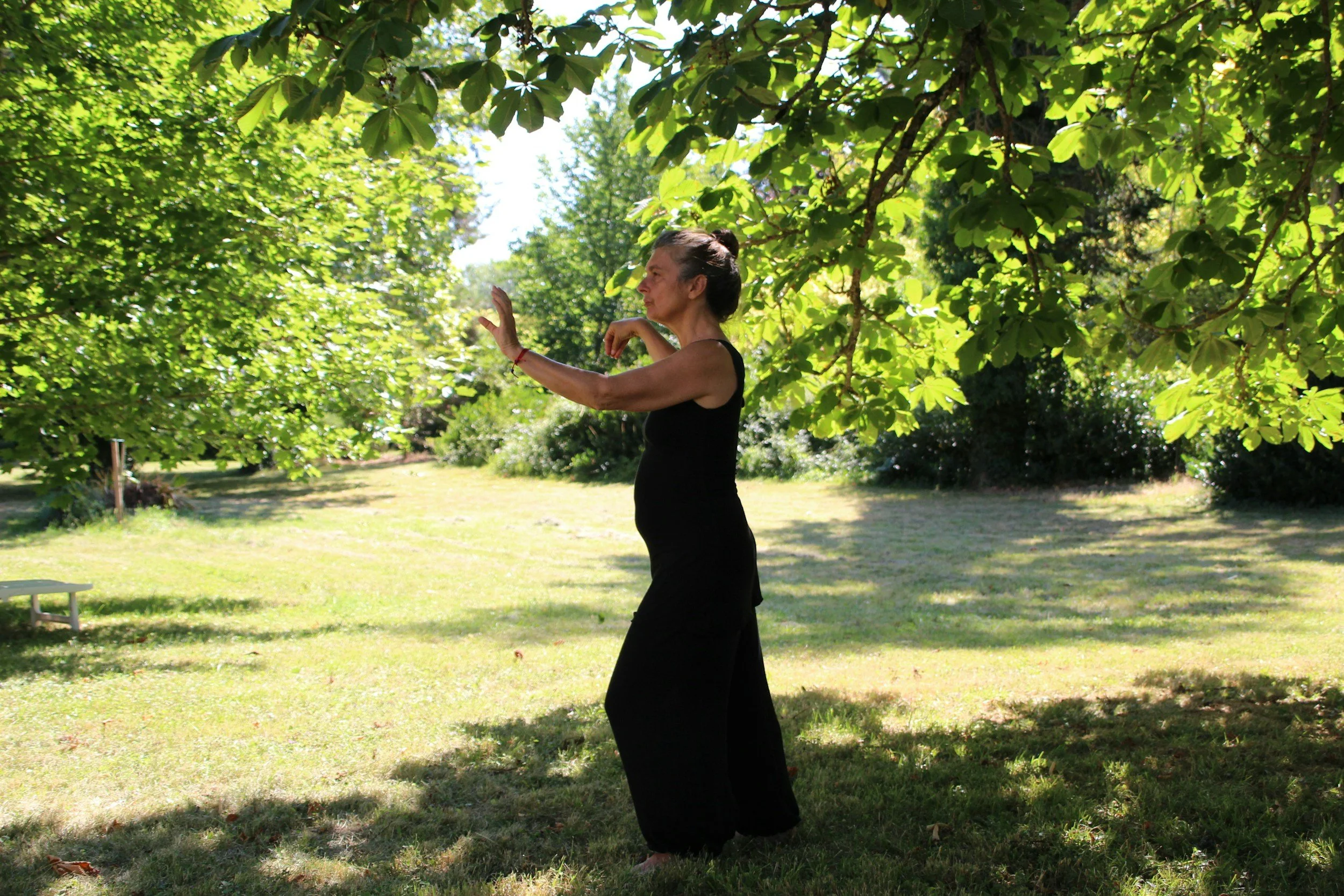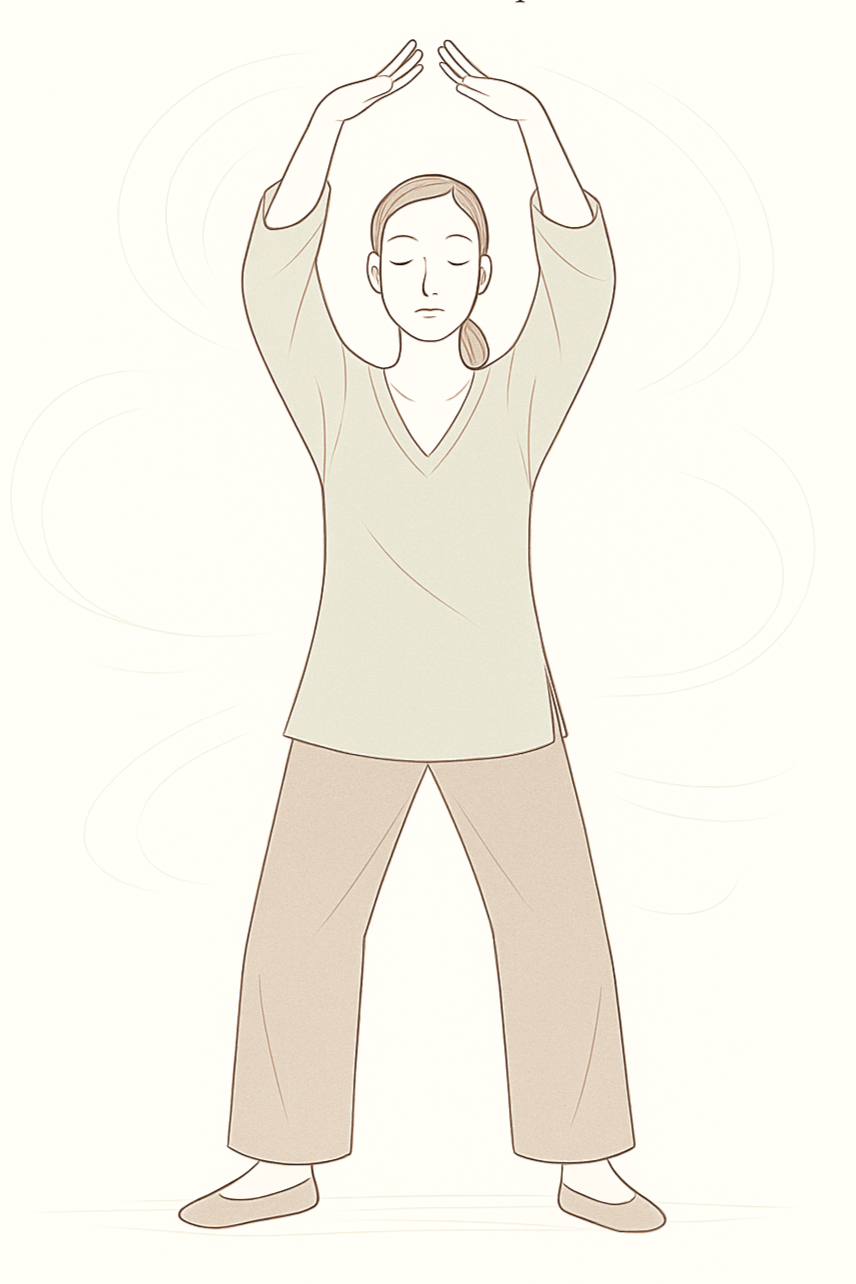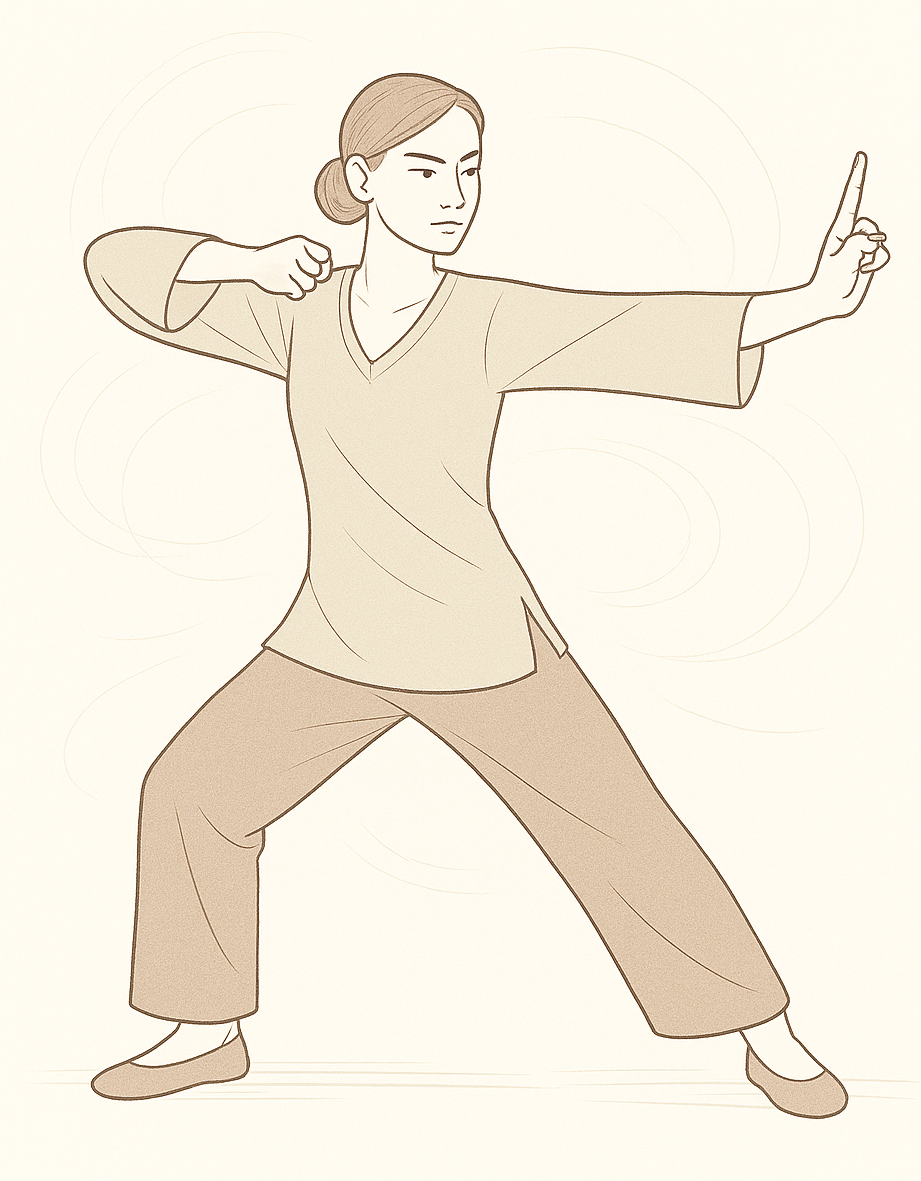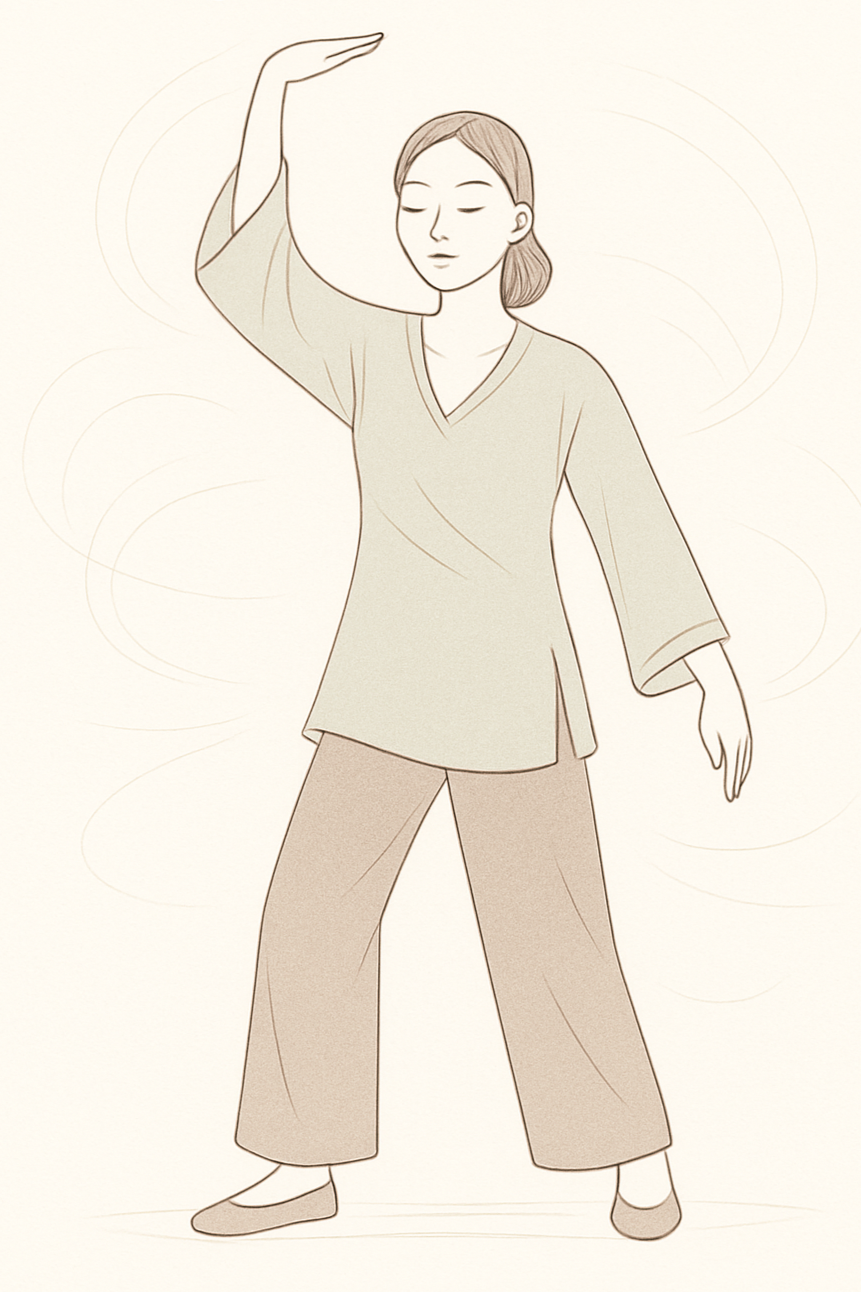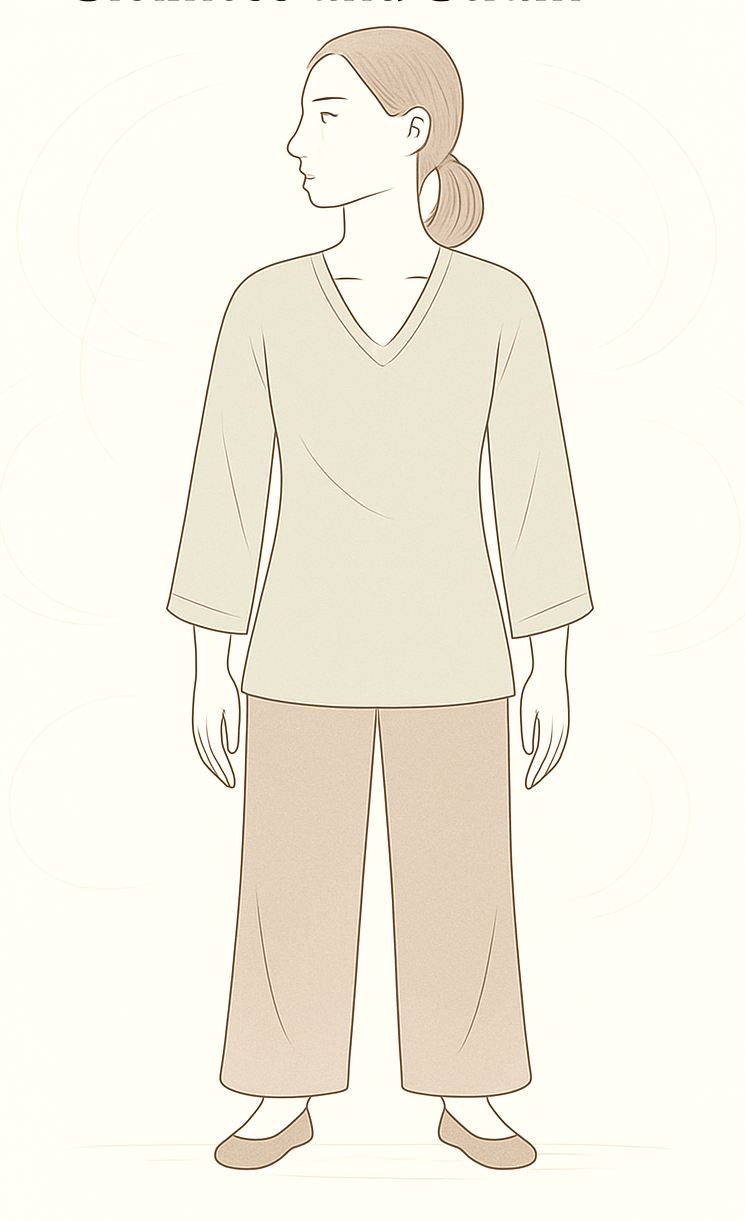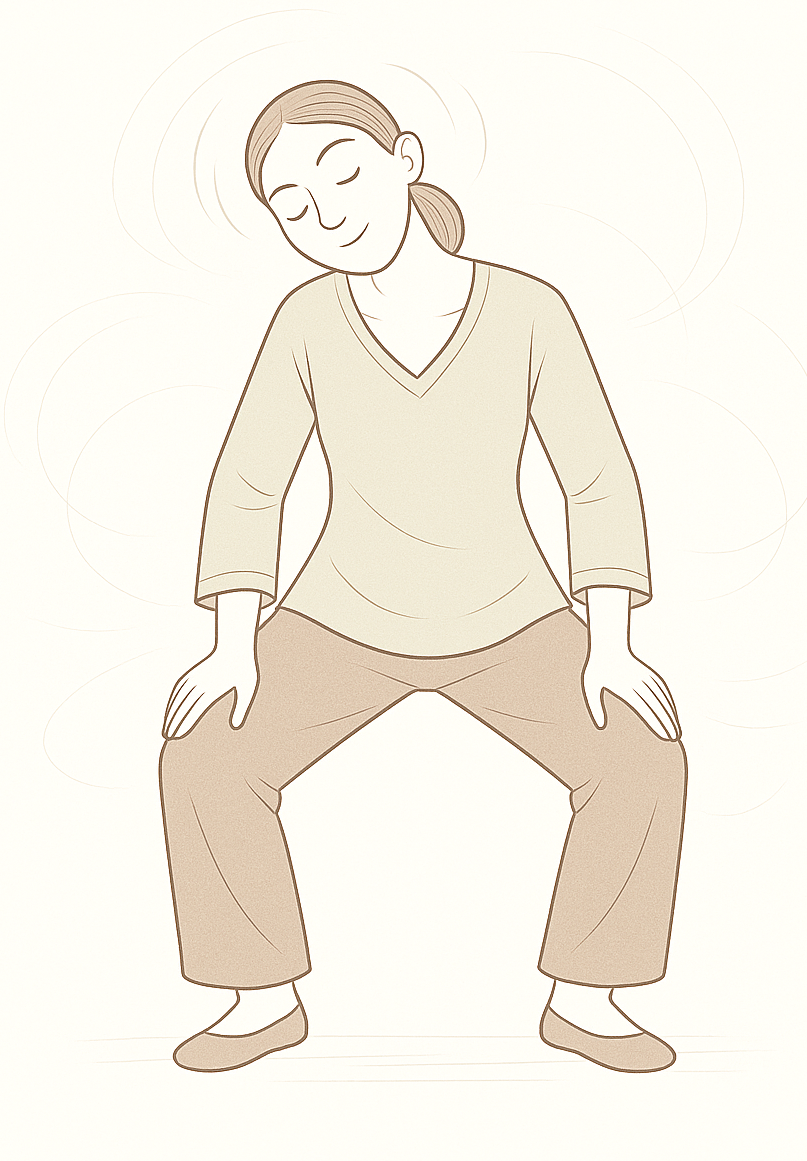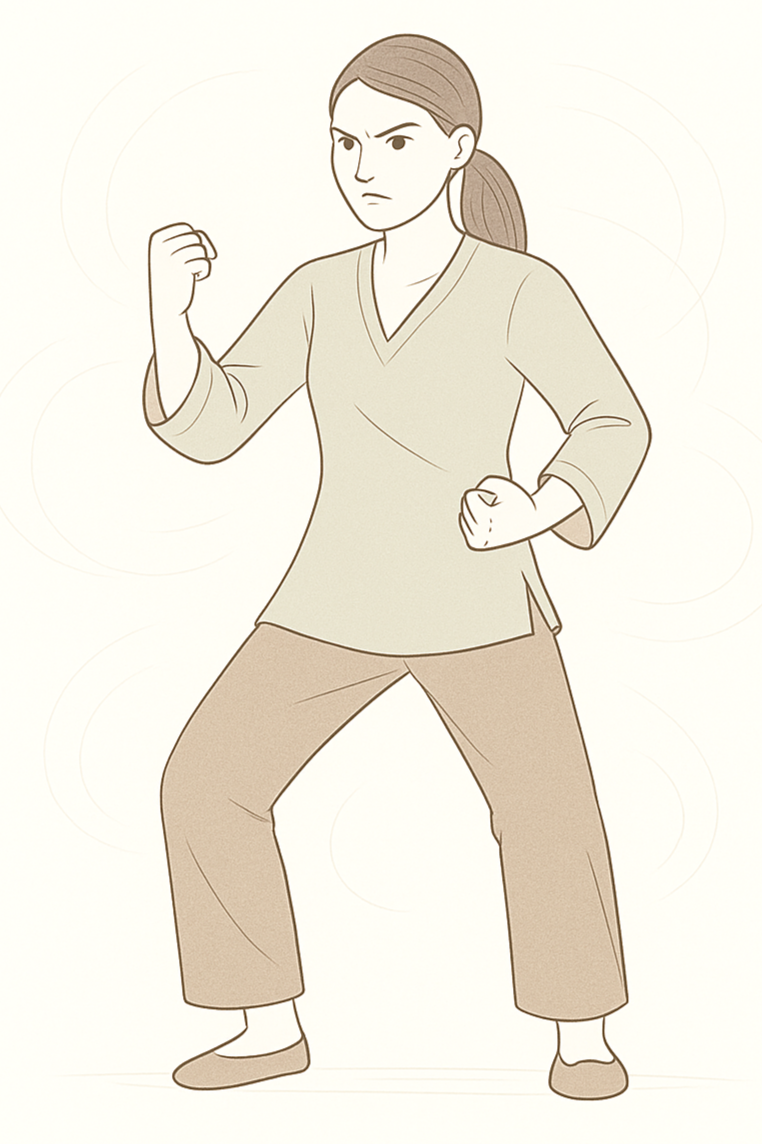
Qi Gong
What is Qi Gong?
Qigong is an ancient mind-body practice that combines gentle movements, breathing techniques, and meditation to promote the flow of Qi within the body. It is often described as a form of moving meditation, allowing individuals to relax, reduce stress, and improve physical and mental health. Qigong is known for its therapeutic benefits, including enhancing flexibility, balance, and overall vitality.
The term breaks down as:
Qi – Vital energy or life force that flows through the body and the universe.
Gong – Skill, cultivation, or work.
So, Qi Gong essentially means “energy work” or “cultivating life energy.”
Qi Gong is a foundational practice in Chinese health culture that:
Improves circulation of Qi and Blood
Harmonises internal energy (Yin/Yang)
Supports organ health
Promotes emotional balance
Enhances immunity and vitality
It’s often considered both preventive and therapeutic, and can be safely practiced by people of all ages and fitness levels.
Ba Duan Jin, or Eight Pieces of Brocade, is one of the most popular and accessible forms of Qi Gong for beginners. It consists of eight gentle exercises designed to improve qi circulation, strengthen organs, and enhance both physical and mental well-being. Each movement is simple, repetitive, and focuses on breath, posture, and intention.
Tips before you start:
Practice daily or at least 3 times per week for best results.
Movements should be slow, smooth, and relaxed — no tension.
Focus on slow, natural breath and sensation rather than perfection.
Wear comfortable and loose clothing.
Practice in a quiet space, ideally outdoors or by an open window.
Beginner Qi Gong
The Sequence
Two Hands Hold Up the Heavens
-
Stand with feet shoulder-width.
Inhale: Raise hands slowly in front of you, palms up, then overhead.
Exhale: Turn palms down, lower hands along the sides.
Repeat 6–8 times.
-
Regulates Triple Burner, aids digestion
-
Lengthening the spine, regulating internal organs.
Drawing the Bow to Shoot the Hawk
-
Step into a horse stance (knees slightly bent).
Pretend to draw a bow to the left (left arm extended, right hand pulls).
Inhale as you draw, exhale as you return to centre.
Alternate sides.
Repeat 6–8 times per side
-
Strengthens the Lungs and Kidneys, opens the chest
-
Strength, intention, Lung Qi.
Raise One Arm to Regulate the Spleen and Stomach
-
Raise one arm overhead (palm up), press the other down (palm down).
Gently stretch upward and downward.
Alternate sides.
Repeat 6–8 times per side.
-
Balances internal organs, relieves tension
-
Harmonising digestion and energy flow.
Look Back to Prevent Sickness and Strain
-
Slowly turn your head to the left, then right.
Keep body still; only neck moves.
Breathe deeply and naturally.
Repeat 6–8 times.
-
Improves flexibility, balances Liver Qi
-
Relaxing the nervous system, nourishing the Liver.
Sway the Head and Shake the Tail
-
In horse stance, sway your upper body and gently "shake" hips/tailbone.
Move rhythmically, relaxed.
Repeat for 1–2 minutes.
-
Clears Heart fire, relaxes the spine
-
Heart health, emotional tension.
Two Hands Hold the Feet to Strengthen Kidneys and Waist
-
Inhale: Raise arms overhead.
Exhale: Bend forward, reaching toward feet or floor.
Inhale as you rise.
Repeat 6–8 times
-
Strengthens lower back, nourishes Kidneys
-
Lower back strength, Kidney energy.
Clench the Fists and Gaze Fiercely
-
Inhale: Clench fists, raise arms to shoulder height.
Exhale: Punch forward with focused gaze.
Alternate punches.
Repeat 6–8 times per side.
-
Builds internal strength, boosts Qi and Blood
-
Boosting Qi and inner strength.
Bounce on the Heels to Clear Disease
-
Stand relaxed.
Inhale: Slightly lift heels.
Exhale: Drop heels gently to the floor.
Repeat 10–15 times.
-
Grounds and circulates energy
-
Stimulates circulation and clears stagnation.


